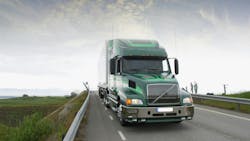Key takeaways:
- The debate over raising weight limits from 80,000 lb. to 91,000 lb. highlights the complexity of the trucking industry's issues.
- Infrastructure risks are significant as increased truck weight could worsen conditions for local roads and bridges, many of which may need costly upgrades.
- Safety concerns arise with heavier trucks being linked to higher crash rates, suggesting that increasing weight limits could compromise safety. The industry has other ways to enhance productivity.
I could barely believe it when I realized I've been writing this column for 15 years. I was recently looking through my files and reflecting, when I also realized that while time has marched on, many of our industry's issues remain. You could pick up a 2010 trade publication and find articles relevant to 2025.
Our need to chime in when Congress considers these issues has also not changed.
At a recent U.S. House Highways and Transit subcommittee hearing on how trucking boosts American communities, the issue of increasing truck weight was discussed. It seems, once again, that the message of raising the weight limits from 80,000 lb. on five axles to 91,000 lb. on six axles is about improving productivity.
Regardless of the divisiveness of the trucking industry on this issue (the Truckload Carriers Association remains opposed to any increase), increasing truck weight by 11,000 lb. is not as simple as many seem to think. A 53-ft. trailer is not built with Legos. Adding a sixth axle is not as simple as just snapping it on. The trucking industry would bear the cost of adding a sixth axle. And don't forget about the impact on our roads and bridges.
The discussions about adding weight to trucks are happening simultaneously as complaints continue about our infrastructure's disrepair and lack of funding. The U.S. Department of Transportation studied the impact of various longer and heavier truck configurations on interstates and U.S. highways and found that the additional cost of damage to roads and bridges would require billions of dollars in new federal spending, adding even more to our budget deficit. The last time I checked, the Highway Trust Fund remains underfunded simply because the fuel tax has never been adjusted to reflect inflation, the changing world of miles per gallon, and the growth of electric vehicles.
Remember, heavier trucks would not just travel on interstates either. Increases in truck weight would have especially severe consequences for local roads and bridges. These heavier trucks need to run on state and local roads to pick up and drop off freight and for "reasonable access" for fuel, food, and other necessities.
Local roads and bridges face significantly more damage than interstates because they might be older, not built to the same standards, or already in poor condition--issues rarely acknowledged by heavier-weight advocates. One recent study identified 474,266 local bridges in the U.S. The research found that 87,455 of those structures would be "at risk" of needing to be replaced or strengthened to accommodate heavier configurations, nearly 1 in 5.
See also: Appeals court pauses ruling that ended Trump's tariff spree
The interesting thing about discussions surrounding increasing weight is that nobody acknowledges that we already have carriers in this country that specialize in hauling heavier weights. They use specialized trailers and obtain state permits to transport heavier loads.
My point is that there are professional trucking companies whose sole purpose is to haul these heavier weights, and they do so safely. If increasing weight was as paramount to productivity increases as many claim, why wouldn't they already haul it?
This brings me to the issue of safety. The USDOT study mentioned earlier found that heavier trucks with six axles had higher crash rates in the three states with sufficient data. As an industry dedicated to reducing accidents and improving a carrier's safety performance, hauling heavier weights should be left to those who specialize. In the event that overall weight limits are increased, it may create an environment in which care and caution may not be taken when hauling.
In reality, any increase to the overall 80,000-lb. limit would be fraught with problems. As an industry that thrives on its operational flexibility, there are other ways in which productivity can be increased. Reduced detention time or increased split sleeper breaks could bring about just that. Averaging a mere 6.5 -7 hours of drive time out of the federally regulated 11 hours shows that changes can be made in an effort to keep our driving population driving. Increasing weight should not be among those options.
About the Author
David Heller
David Heller is the senior vice president of safety and government affairs for the Truckload Carriers Association. Heller has worked for TCA since 2005, initially as director of safety, and most recently as the VP of government affairs. Before that, he spent seven years as manager of safety programs for American Trucking Associations.

